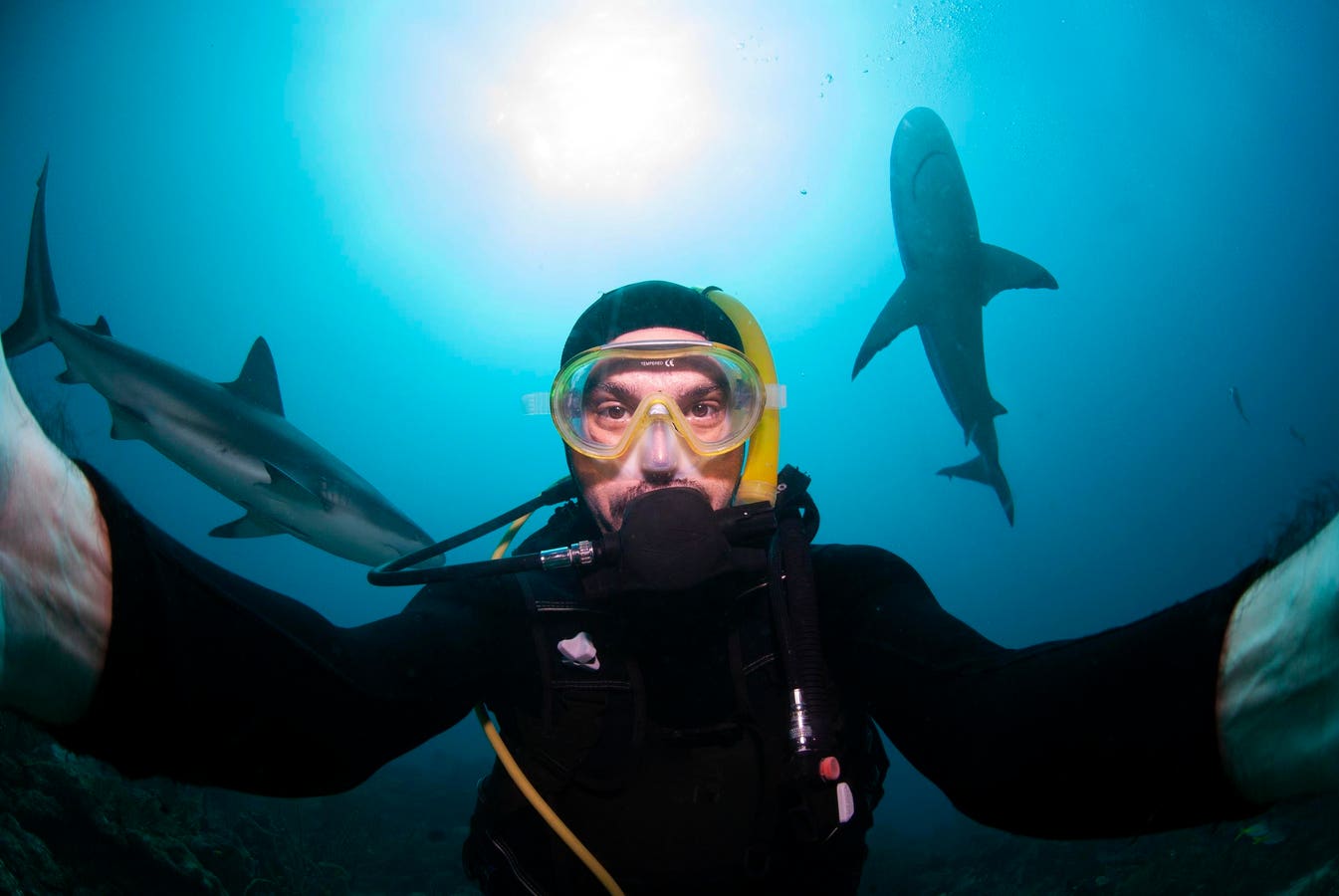Electric boats like Candela’s C-8 are coming fast, and many innovators are based in Sweden.
AFP via Getty Images
The electrification of personal vehicles is in full swing, and even trucks are starting on the EV journey. But boats and shipping are a different matter. Sweden, with its extensive coastline and maritime tradition, is hoping to change that, leading the way towards electric boats and more sustainable coastline marinas. I talked to Peter Berg, Project Leader of Innovatum AB in Trollhättan about the companies and innovation spearheading the transformation.
Enjoy The Silence Of Electric Boats
Gothenburg showcased its top electric boat companies and technology at Enjoy The Silence, part of EVS 38, an electric vehicle symposium in Gothenburg. Alongside a selection of electric vessels, this event at a marina in the Swedish city also demonstrated boat charging. Sweden is second only to Norway in EV penetration (58% versus 92%), so it’s a fitting place for extending that transition from land to water.
“We have several missions with this project,” says Berg. “One is to show the charging infrastructure, and the other is to show the products. If there are no boats, no one would invest in the chargers and vice versa. We thought this was a good opportunity to show them together. It’s difficult to have both shown in small marinas. Gothenburg is a brilliant place for this, particularly alongside the EVS Conference.”
The Explore The Silence event in Gothenburg showcased electric boats and marine chargers.
Innovatum AB
“The first thing we were trying to demonstrate was that it is possible to travel with an electric boat,” says Berg. “Another of the big opportunities with an electric boat is that it is silent.” Hence the Enjoy the Silence title. “This also comes without any pollution to the water or emissions. People are a bit skeptical about electric boats because they’ve never seen one. We haven’t had so many different boats at one location in Sweden before. We also wanted to demonstrate that you don’t need superchargers for all the boats. They can be charged overnight, and some have quite a long range.”
Central to Enjoy the Silence was the range of electric boats on show, many of which were available for test rides. “We have a lot of traditions within boating in Sweden,” says Berg. “So there are lots of Swedish boat brands, several of them electric. There are also a lot of opportunities for charging operators or equipment suppliers.”
X Shore: High Performance Electric Boats
X Shore was one of the first companies to bring electric boats into the mainstream.
© 2019 Bloomberg Finance LP
One of the earliest electric boat companies to gain media attention is X Shore. Its boats are relatively conventional other than being electrified, offering ranges up to 100 nautical miles and a 30-knot max speed. Even at full pelt, this is a quiet boat and with the weight of its batteries very stable. “It’s for people who want speed,” says Berg. “If you go waterskiing, you need that kind of boat. It’s almost all carbon fiber, so while the batteries are heavy, the hull is very light.”
Candela: Hydrofoil Electric Boats Efficiency
Candela takes a more high-tech approach by being a hydrofoil alongside its electrification, like New Zealand’s Vessev. “You need to reduce the drag from water,” says Berg. “Candela mainly focuses on the P-12 ferry right now.” However, the boat on show in Gothenburg was the C-8 leisure craft, which is powered by a motor from Polestar. “It’s difficult to get a big consumer market with the C-8, but they have learned a lot on that boat and it’s top of the line for people with enough money. However, the P-12 is already operating in Stockholm, reducing energy consumption by 80 or 90%. The main challenge for an electric boat is to reduce the drag through the water.” Once on its hydrofoil, a Candela boat can go much further on the same battery capacity as a conventional vessel without this technology.
Pol: Potentially Infinite Electric Boats Range
However, the Pol boat on show in Gothenburg shows an even more exciting potential possibility for an electric boar – limitless range. This is not a fast craft, with an 11-knot top speed, and it has a range of 60 nautical miles when cruising at 7 knots. However, Pol has also installed a canopy incorporating solar panels. On a sunny enough day, the Pol boat can transport up to 13 people for as long as there is sufficient light at a speed of 4 knots.
The Pol boat’s solar roof potentially gives it infinite range – sunlight permitting.
Innovatum AB
“It’s very energy efficient,” says Berg. “It’s made of carbon fiber, so it’s very light and has very low drag. There are other boats that have this concept with a big solar roof. There is a Spanish brand, there’s Pol, and in Finland, Elvene. They have gone 200 nautical miles without external charging. You can go boating without any environmental impact.”
Volvo Penta: Electric Boats To Grid Power Potential
The boat on show from Volvo Penta wasn’t fully electric, but a hybrid between diesel and electric. It was much larger and being used to illustrate another potential of battery-powered vessels – as grid energy storage. “It has a battery around 80kWh,” says Berg. “They can go at lower speeds on electricity in sensitive areas but could also use the battery as a resource. Many manufacturers see the potential in ‘boat to grid’ winter storage. For the winter season, if you have ten boats this size, then you have a one-megawatt battery for frequency balancing or energy trading.”
Volvo Penta’s boat battery can be used to provide boat-to-grid energy storage.
Volvo Penta
This was what Volvo Penta was demonstrating in Gothenburg, together with a local energy company. “You could make revenue from the boat when it’s not used,” says Berg. “In a marina, the boats are seldom used, so they can charge at low power or using solar panels, collecting energy before the weekend, and then they can be used to provide local energy. There will be periods when the peak is too high for the grid and then the battery can be a good resource to absorb that energy and to use it at a later stage.”
Electrifying Sweden’s Coast
Berg is also looking at how to build the charging infrastructure around marinas. This isn’t just about power connectivity, however. “We must work on the business model,” he says. “We need to start building charging opportunities along the coast so that you can travel up and down with an electric boat.” This is a project called go:LEIF. “You can already travel in a X Shore vessel from Gothenburg up to Fjallbacka or down to Humburgsund along the Swedish West Coast. With an X Shore, you can travel at a higher speed after charging in Gothenburg. You can go to a small island called Burica where they put up a supercharger, or Marstrand.”
However, most people won’t consider an electric boat without a berth where they can charge their boat, in a similar way to how home charging remains the primary enabler for EV car ownership. “You can go two hours to some location, maybe 10 or 15 nautical miles, fill up the battery and then go back. That is the use case that we need to have, and then we need quite decent power in those chargers.” However, sailing ships with an electric outboard motor already make considerable sense, because they don’t need a lot of range on battery power. “You’re only talking about a few nautical miles to get out of the harbor.”
Nevertheless, convincing the seafaring community to choose electric boats faces even greater challenges than personal road transport. “The green transition has rough seas right now,” concludes Berg. “But I’m quite positive. Five or six knots would be perfect. For a boat that lives for 40 years, you can retrofit with an electric drive. It is not that much more expensive than a new diesel engine. But we need to think differently. We need to value that it’s silent. We need to value that we don’t put pollution into the sea. Two-stroke outboard motors can be terrible. We need to have some incentives and regulations put in place to help, because otherwise it will be quite tough.”









